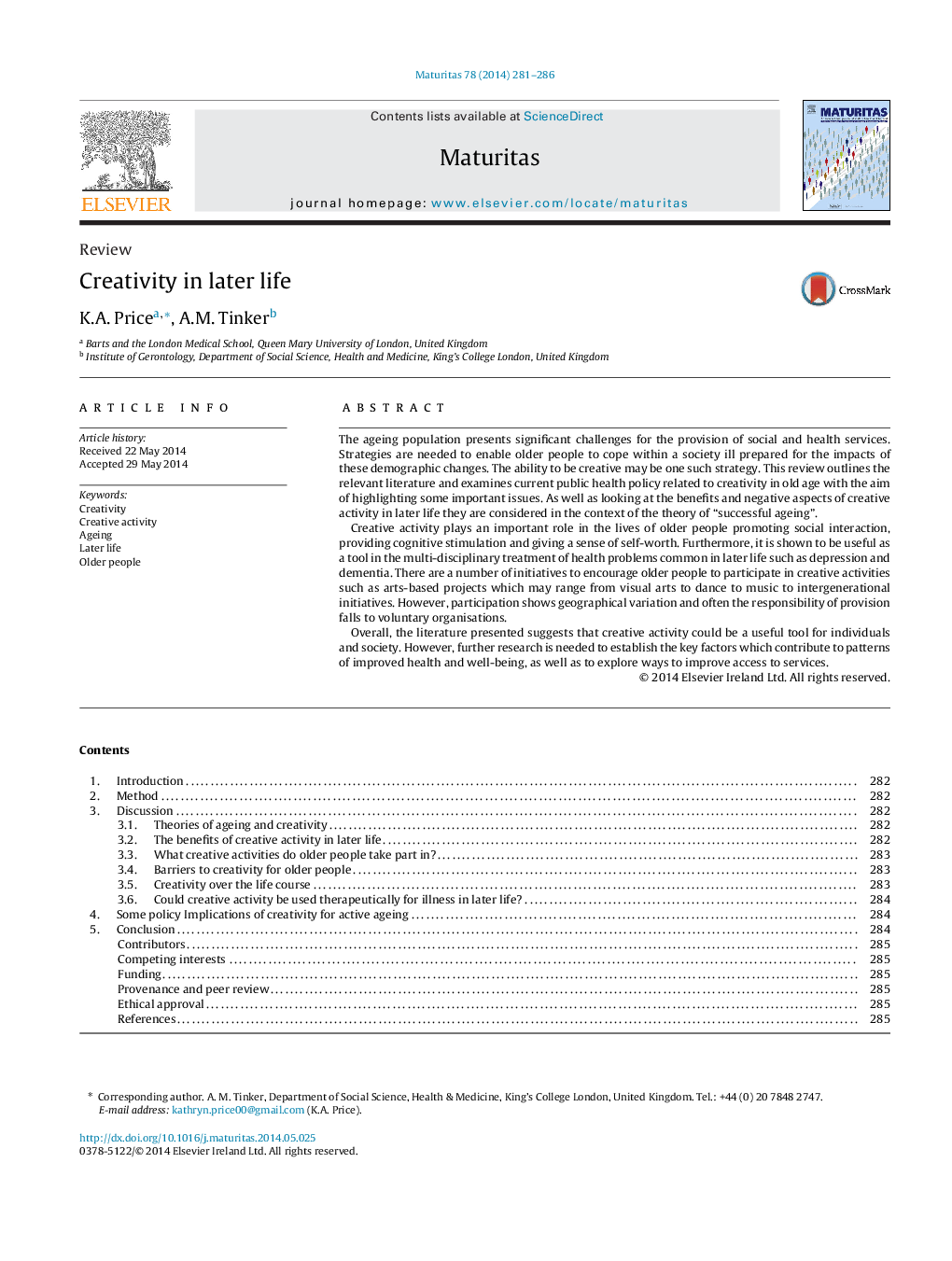| Article ID | Journal | Published Year | Pages | File Type |
|---|---|---|---|---|
| 1917248 | Maturitas | 2014 | 6 Pages |
The ageing population presents significant challenges for the provision of social and health services. Strategies are needed to enable older people to cope within a society ill prepared for the impacts of these demographic changes. The ability to be creative may be one such strategy. This review outlines the relevant literature and examines current public health policy related to creativity in old age with the aim of highlighting some important issues. As well as looking at the benefits and negative aspects of creative activity in later life they are considered in the context of the theory of “successful ageing”.Creative activity plays an important role in the lives of older people promoting social interaction, providing cognitive stimulation and giving a sense of self-worth. Furthermore, it is shown to be useful as a tool in the multi-disciplinary treatment of health problems common in later life such as depression and dementia. There are a number of initiatives to encourage older people to participate in creative activities such as arts-based projects which may range from visual arts to dance to music to intergenerational initiatives. However, participation shows geographical variation and often the responsibility of provision falls to voluntary organisations.Overall, the literature presented suggests that creative activity could be a useful tool for individuals and society. However, further research is needed to establish the key factors which contribute to patterns of improved health and well-being, as well as to explore ways to improve access to services.
